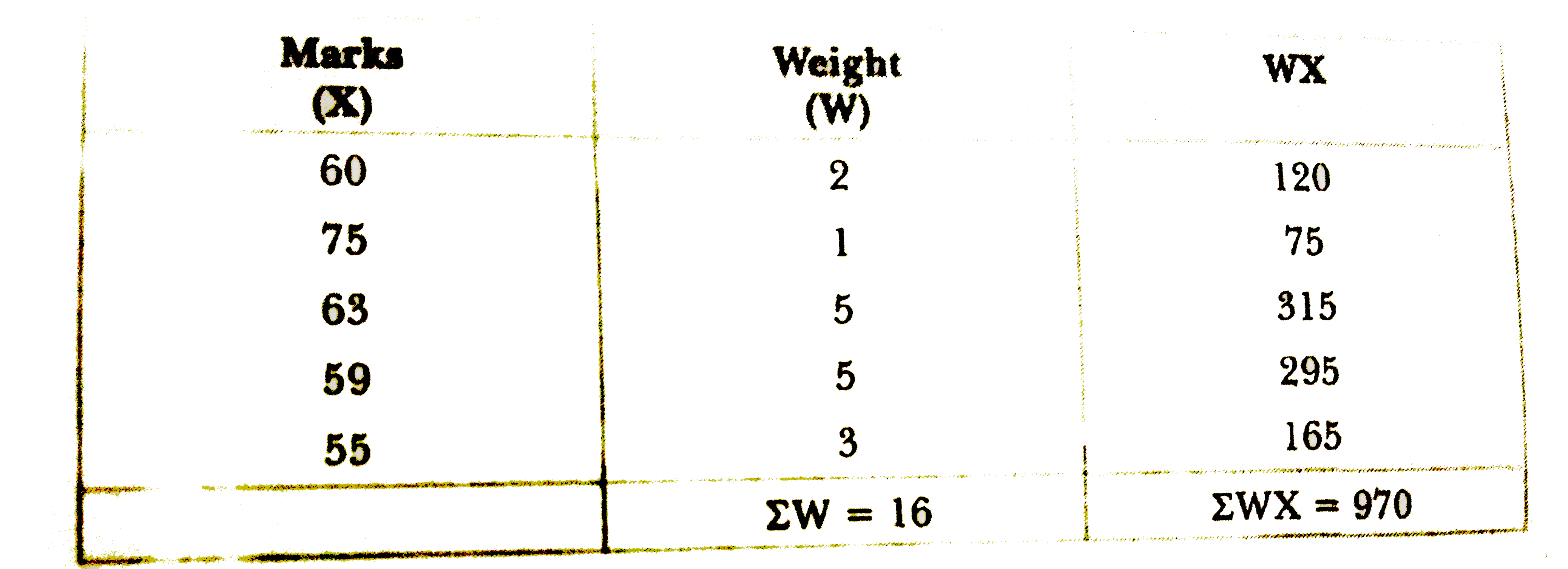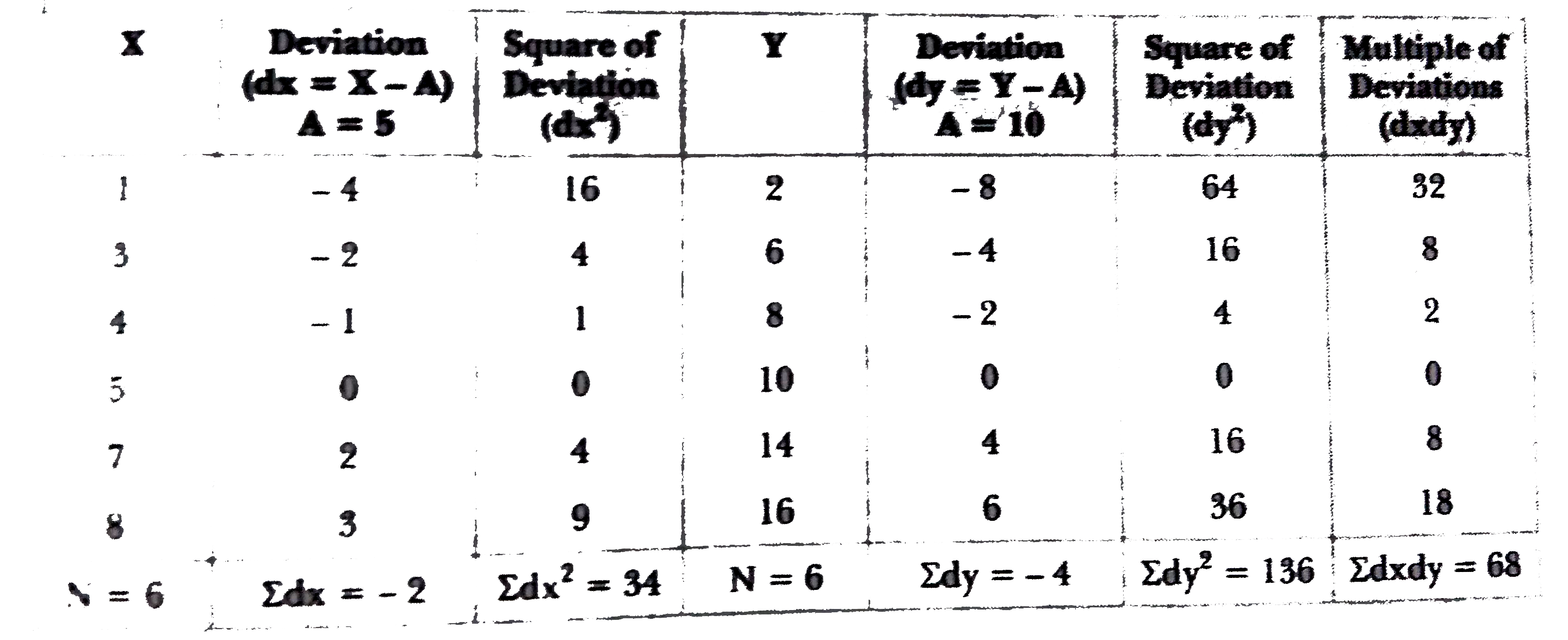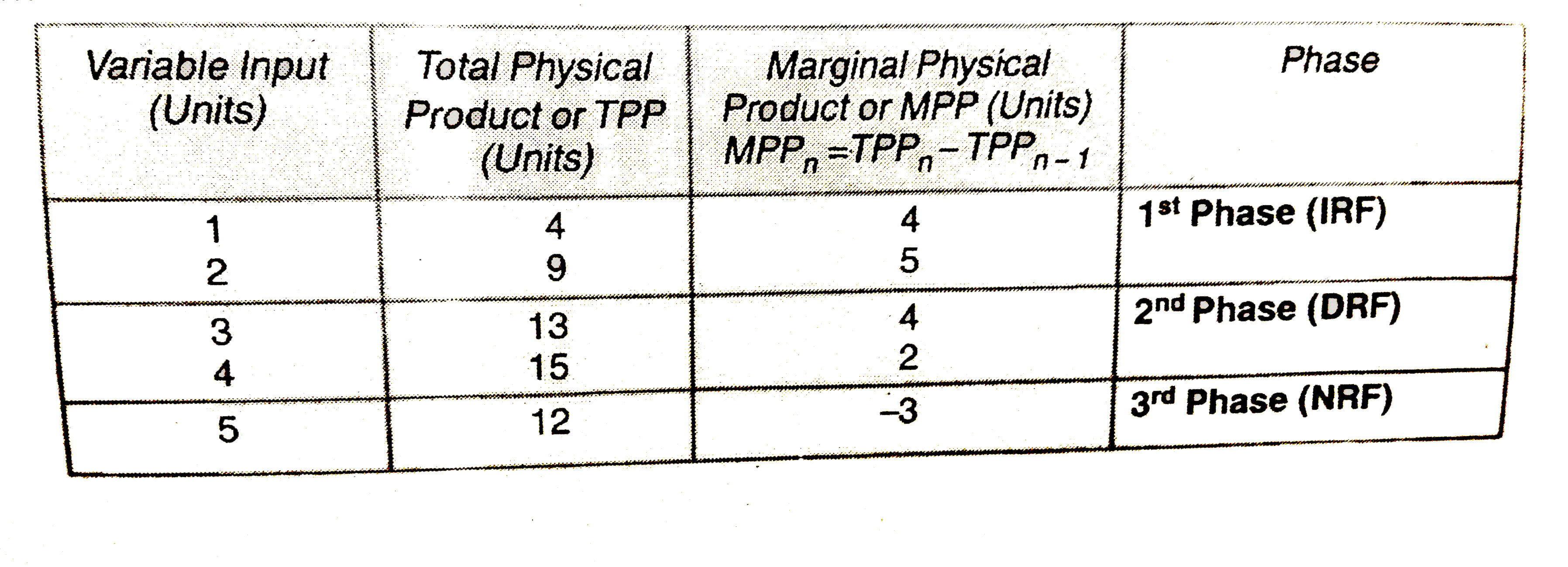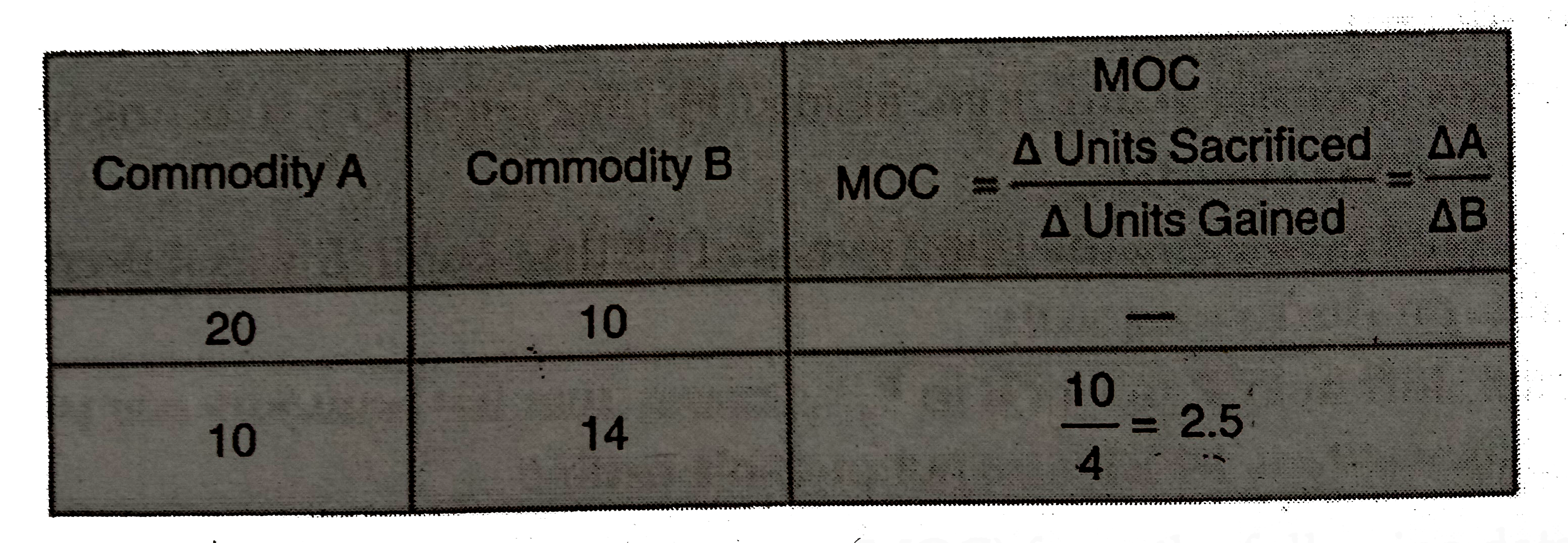Explore topic-wise InterviewSolutions in .
This section includes InterviewSolutions, each offering curated multiple-choice questions to sharpen your knowledge and support exam preparation. Choose a topic below to get started.
| 6151. |
What is meant by complementary goods ? |
| Answer» Solution :Complementary GOODS are those goods which are used TOGETHER to satisfy a particular want. For example, Car and PETROL, TEA and sugar. | |
| 6152. |
For drawing lottery ___________sampling is used . |
|
Answer» RANDOM |
|
| 6153. |
Demand for a product is elastic. Its price falls. What will be its effect on total expenditure ? Give example. |
Answer» SOLUTION :Given that demand for THEPRODUCT is ELASTIC which means that % rise in demand is more than % fall in price . Therefore total expenditure will move in the OPPOSITE direction of price change. Since price has REDUCED, total expenditure would rise. For example.
|
|
| 6154. |
What is meant by frequency? |
| Answer» SOLUTION :Frequency is the number of times item occurs or REPEATS itself in the SERIES. | |
| 6155. |
Explain causes of leftward shift in demand curve of a commodity. |
|
Answer» Solution :(i) A fall in price of substitute GOODS. (ii) An INCREASE in price of complementary goods. (iii) A fall in income of the consumer in CASE of a NORMAL good. (iv) Unfavourable change in tastes and preferences of the consumer. (v) Expectation of fall in price of the commodity in the FUTUTRE. |
|
| 6156. |
What is meant by prices being rigid? How can oligopoly behaviour lead to such an outcome? |
| Answer» Solution :Prices being rigid or price rigidity refers to a SITUATION in which price tends to stay fixed irrespective of changes in demand and supply conditions. In an oligopolistic market, firms are in a position to influence the prices. However, they stick to their prices in order to avoid a price war. If a firm tries to reduce the price, the RIVALS will also react by reducing their prices. So, it will be of no benefit. Likewise, if a firm tries to raise the price, other firms might not do so. As a RESULT, the firm which intended to raise the price will lose its CUSTOMERS. So, oligopoly BEHAVIOUR leads to price rigidity in an oligopolistic market | |
| 6157. |
Price elasticity of supply of a good is 0.8. Is the supply 'elastic' or 'inelastic', and why? |
| Answer» SOLUTION :The supply is inelastic because coefficient of PRICE elasticity of supply is less than ONE. | |
| 6158. |
Give relation between TR and MR when price falls with rise in output (ii) AR and MR when price falls with rise in output. |
|
Answer» Solution :(i) When MR is FALLING positively, TR increases but at a decreasing rate. When TR is maximum and constant, MR is equal to zero. When TR starts falling, MR becomes negative. (ii) AR falls when MR `lt` AR. MR curve is steeper than the AR curve. MR can FALL to zero but AR is always POSITIVE. |
|
| 6159. |
Explain the implications of the feature 'large number of buyers' or homogeneous products' in a perfectly competitive market. |
| Answer» | |
| 6160. |
What kind of the data are contianed in the census of population and national income estimates, for the government? |
| Answer» Solution :B | |
| 6161. |
Calculate the weighted mean from the following data: {:("Marks",60,75,63,59,55),("Weight",2,1,5,5,3):} |
Answer» SOLUTION : `barX_(W)=(sumWX)/(sumW)` `=(970)/16= 60.625` WeightedMean = `60.625`. |
|
| 6162. |
Explain briefly any three factors which lead to decrease in demand. |
|
Answer» Solution :1. Fall in the income of the CONSUMER in case of a normal good. 2. An unfavourable change in tastes and prefernces of the consumer. 3. Expectation of fall in PRICE of the COMMODITY in the NEAR future. |
|
| 6163. |
Estimate quartile deviation and the coefficient of quartile deviation of the following data: 8,9,11,12,13,17,20,21,23,25,27 Show that QD is the average of the difference between two quartiles. |
|
Answer» |
|
| 6164. |
Calculate the correlation cofficient beteen X and Yand comment on their relationship . |
Answer» Solution : `r=(sumdxdy-((sumdx)xx(sumdy))/(N))/(sqrt(sumdx^(2)-((sumdx)^(2))/(N)xxsqrt(sumsy^(2)-((sumdy)^(2))/(N))` `r=(68-((-2)xx(-4))/(6))/(sqrt(34-((-2)^(2))/(6))xxsqrt(136xx((-4)^(2))/(6))` `(68-(8)/(6))/(sqrt(34-(4)/(6))xxsqrt(136-(16)/(6)))` `=((408-8)/(6))/(sqrt((204-4)/(6))xxsqrt((816-16)/(6)))` `=((400)/(6))/(sqrt((200)/(6))xxsqrt((800)/(6)))` `((400)/(6))/((1)/(6)sqrt(200xx800))` `(400)/(6)xx(6)/(1)xx(1)/(sqrt(1,60,000))` `(400)/(400)=1` CORRELATION coefficient (r)=1 This is a situation of a PERFECTLY positive correlation between X and Y. |
|
| 6165. |
In mean deviation,negative deviations are also treated as positive deviations. (true/False) |
|
Answer» |
|
| 6166. |
In the study of consumer behaviour, we study decision making by a consumerf with respect to : |
|
Answer» Spending of income |
|
| 6167. |
State any two central problems under 'problem of allocation of resources'. |
| Answer» SOLUTION :(i) What to PRODUCE and in what QUANTITY, (II) How to produce. | |
| 6168. |
What is ordinal utility ? |
|
Answer» |
|
| 6169. |
If the index of prices is estimated to be 112 in 2018, it means that in comparison to the base year, prices in 2018 are higher by: |
|
Answer» 0.12 |
|
| 6170. |
If the demand for good Y increases as the price of another good X rises, how are the two goods related? |
| Answer» SOLUTION :The TWO GOODS are SUBSTITUTES. | |
| 6171. |
Following is the utility schedule of a person: {:("Units of x consumed",1,2,3,4,5,),("MU (in utils)",50,40,30,20,10,):} Suppose that the connodity is sold for Rs 4 and MU of one rupee is 5 utils. How many units of the commodity will the person purchase to maximise his satisfaction ? |
|
Answer» SOLUTION :Let US first calculate MU in terms of money `(MU_(X))` Given: VALUE of 5 utils = Rs 1, i.e., `MU_(x) = 5`. We know : `MU_(x) = (MU " in Utils")/(MU_(M))`  Consumer will purchase 4 units because at `4^(th)` unit, MU = Price. `**` The consumer will not purchase less than 4 units as `MU gt` Price and there is scope for increasing the total satisfaction by purchasing more units. `**` Similarly, consumer will not buy more than 4 units as `MU lt` Price and total satisfaction can be INCREASED by purchasing less quantity. |
|
| 6172. |
What are the advantages of sampling method of collection of data over the census method ? |
| Answer» Solution :1. Economical:It is economical, because we have not to collect all data. Instead of getting data from 5000 farmers, we get it from 50-100 only.2. LESS Time Consuming:As no of units is only a fraction of the total universe, time consumed is also a fraction of total time. Number of units is considerably SMALL, hence the time.3. Reliable:If sample is taken judiciously, the results are very reliable and accurate.4. Organisational Convenience:As samples are taken and the number of units is smaller, the better (TRAINED) enumerators can be employed by the ORGANISATION. | |
| 6173. |
What is the general profit maximising condition for a producer (MR and MC approach)? |
|
Answer» |
|
| 6174. |
Primary data collection is comparatively ………………….. than the secondary data collection. (economical/costlirer) |
|
Answer» |
|
| 6175. |
The fundamental economic problem being faced is: |
|
Answer» Unlimited human wants |
|
| 6176. |
What do you mean by the production possibilities of an economy ? |
| Answer» SOLUTION :Production POSSIBILITIES of an economy refer to the different combinations of GOODS and services which an economy can produce from a given AMOUNT of RESOURCES and a given level of technological knowledge. | |
| 6177. |
When total product is constant, average product will fall. |
| Answer» Solution :True. Because AVERAGE Product `=(TP)/("Variable INPUT")` and since `TP` is CONSTANT and variable input increases, `AP` will fall. | |
| 6178. |
Explain the shape of a production possibility frontier. |
| Answer» Solution :Production Possibility Frontier (PPF) is a downward SLOPING, concave curve. It shows INCREASING Marginal Rate of Transformation (MRT)as more quantity of one good is produced by reducing quantity of the other good. This behaviour of the MRT is based on the assumption that all less and less efficient resources have to be transferred to the production of the other good which RAISES marginal COSE, i.e., MRT. | |
| 6179. |
What happends to MU when TU is maximum ? |
|
Answer» MU is negative |
|
| 6180. |
What is a histogram? Describe its types. |
| Answer» | |
| 6181. |
Which of the following is not a phase in the Law of Variable Proportions ? |
|
Answer» INCREASING RETURNS to a factor |
|
| 6182. |
All quantitative information is __________.(statistics/not statistics) |
|
Answer» |
|
| 6183. |
What does a consumer price index for industrial workers measure ? |
| Answer» Solution :The consumer PRICE index for industrial workers measures the average change in prices paid by the SPECIFIC classof consumers for GOODS and SERVICES consumedby them in the current year in COMPARISON withbase year. | |
| 6184. |
What will be the effect of increase in price of factor inputs on the equilibrium price and equilibrium quantity ? |
|
Answer» Equilibrium price will rise and equilibrium QUANTITY will FALL |
|
| 6185. |
Identify different phases of the Law of Variable Proportions from the following schedule. Give reasons for your answer. |{:("Variable Input (Units)","Total Physical Product (Units)"),(1,4),(2,9),(3,13),(4,15),(5,12):}| |
Answer» SOLUTION :
|
|
| 6186. |
There are 10 students in your school who excel in the game of cricket. All are equally brilliant, but you are to select onluy 3 out of 10 for representing your school in the inter-zonal cricket tournament. How would you do it ? Give details with reason. |
| Answer» Solution :As all the STUDENTS are equally brilliant in the game, so we can say that all the elements of our universe are homogeneous and identical. In this regard, all the students deserve a fair and equal chance of being selected into the team. Therefore, random sampling technique (lottery method), being a scientific method and free from any personal bias, would be the most appropriate to USE for the selection of students.Process of selection: First of all, WRITE the name of each student on identical (in terms of size, colour, ETC) slips of paper (total 10 slips). Now, place all the slips in a box or a container and SHUFFLE well. After this draw one by one 3 slips from the box. Students with their name on the drawn slips would be selected for the tournament. | |
| 6187. |
Explain the implication of the following iin a perfectly compeitive market: (a) Large number of buyers (b) Freedom of entry and exits to firms. |
| Answer» Solution :a) Implication of 'very large no. of buyers and sellers' is that the no. of sellers is so large that the share of each seller is insignificant in the total supply. Hence, an individual seller cannot influence the MARKET price. Similarly, a single buyer's share in total purchase is so insignificant because of their large numbers that an individual buyer cannot influence the market price.b)Implication of ' freedom of entry and exit' : 'Freedom of entry' signifies that there are no barriers to the entry of new firms into industry. When the existing firms are earning abnormal profits, the new firms, attracted by the PROSPECTS of PROFIT, enter the industry. This raises market supply, which in turn, leads to fall in market price and consequently profits. Te entry continues TILL each firm is earning just the normal profits.'Freedom to exit' signifies that there are no barriers which restrict the existing firms from leaving the industry. The firms try to leave when they are facing losses. As the firms start leaving, market supply falls, leading to rise in market price and consequently reduction in losses. The firms continue to leave till the losses are WIPED out and each existing firm is earning just the normal profits. | |
| 6188. |
State one limitation of graphic presentation of time series data. |
| Answer» Solution :Graphic presentation may be misused for FALSE projection of the STATISTICAL facts, especially in case of ADVERTISEMENTS. | |
| 6189. |
Correlation between two variables is |
|
Answer» PROOF of RELATIONSHIP between two variables. |
|
| 6190. |
A monopoly firm can make abnormal profits in the long run, but not a firm under monopolistic competition and perfect competition. |
| Answer» Solution :A monopoly FIRM can make abnormal profits in the long run DUE to restrictions on ENTRY and exit. HOWEVER, a firm under perfect competition and monopolistic competition cannot make abnormal profits due to FREEDOM of entry and exit. | |
| 6191. |
Maximum Price Ceiling leads to a situation of: |
|
Answer» EXCESS Demand |
|
| 6192. |
Manish is indifference to the bundles (4,7) " and " (4,8). Indicate, whether Manish has monotonic preference or not ? |
| Answer» Solution :No, if Manish had monotonic preference, then he WOULD have preferred (4,8) over (4,7) as it CONTAINS more of ONE commodity and no less of the other. | |
| 6193. |
Define social cost |
| Answer» Solution :It refers to the DISADVANTAGES SUFFERED by the society due to production of a COMMODITY. | |
| 6194. |
Marginal cost changes at a rate faster than average cost. |
| Answer» SOLUTION :True. It happens because marginal cost is CALCULATED on the BASISOF ADDITIONAL unit only. Whereas,average cost is calculated on the basis of all the units. | |
| 6196. |
Discuss the meaning of Prrce Ceiling and Price Floor. |
|
Answer» Solution :PRICE ceiling refers to FIXING the maximum price of a COMMODITY that is lower than the equilibrium price. Price floor is the minimum price FIXED for a commodity by the government (above the equilibrium price), which must be paid to the producers for their produce. |
|
| 6197. |
Determine the marginaol opportunity cost from the following data: |
Answer» SOLUTION :
|
|
| 6198. |
In case of perfect competition, price is determined at: |
|
Answer» EQUILIBRIUM PRICE of the firm |
|
| 6199. |
Which of the following diagrams is drawn by joining mid-points of the tops of all rectangles in a histogram: |
|
Answer» FREQUENCY distribution |
|
| 6200. |
Range is the |
|
Answer» DIFFERENCE between the LARGEST and the SMALLEST observations |
|